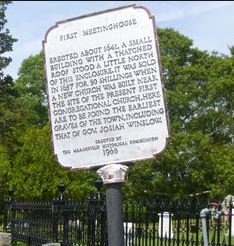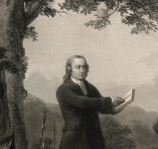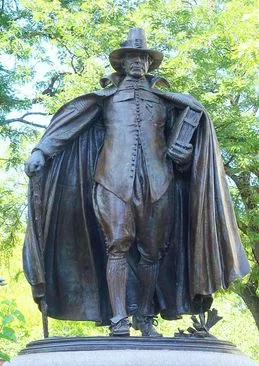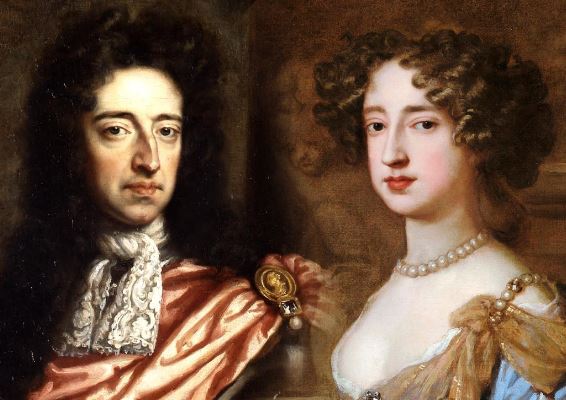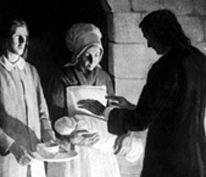First Congregational Church of Marshfield & the 1600s
It was during 1640 that Mr. Richard Blinman became the first ordained Minister to service the Marshfield congregation having arrived from Wales in 1636. Governor Winslow had invited Pastor Blinman to Green’s Harbor, after the pastor was kick out of the Church of England for following the Separatists. Mr. Blinman was considered a "godly and able man" but was not well received by the congregation. It is thought he may have been too liberal for the members.
Before a meetinghouse was built, the congregation met in people’s homes. The first meeting house was a simple, small thatch-covered structure near the “Old Burial Ground” (now Winslow Cemetery).
At this time period most people were buried near their own property and no monuments were used to mark the graves (or at most a field stone might be used). It was during the 18th century that the Congregational churches started routinely holding funerals.
There was no shared bible; most likely each family had its own Geneva Bible.
On Sundays, two services were held. Each sermon was around 2 hours long. At this time, only members were allowed to sit, all other excluding the ill and infirm were left to stand.
The Cambridge Platform was created in 1648 between the Congregational Churches of Plymouth and Massachusetts Bay Colonies which allowed cooperation and minister movement between them.
Marshfield had a pretty harmonious relationship with the Native Americans thanks to Edward Winslow. However, concerns in 1643 lead to a town vote to have a "constant watch". This included appointed men staying home on the Sabbath to continue the watch and others bringing arms to the meeting house during services.
William Thomas was chosen to be the first moderator in 1644. It was also decided to place fines on everyone who was late, did not attend, was disruptive or left early. William's son was one of the first fined.
During this time period the church was included in town expenses. Taxes were set by Raters and whose who did not pay were brought to court. Marshfield would have a continuous issue from 1655 to 1672 with the collection of taxes to pay their ministers.
The court of Plymouth was involved with town affairs, sending leaders out when it was reported that Mr. Bulkeley was not being paid as agreed. Marshfield also got in trouble from the court for not building stocks, a whipping post or having a pound for stray animals.
1657 saw Samuel Arnold installed as minister a strict puritan-type, demanding attendance at church and deference to the minister. He was known to harass the local Quakers and fought over access to ministerial lands with others.
On lands granted by Timothy Williams and Anthony Snow, the 2nd Meetinghouse was built.
In 1665 the town had grown large enough that Selectmen were introduced, to represent other freemen during meetings. People falling under the status of “freeman” were the only group allowed to vote. What defined one as a “freeman” is unclear and seems to have varied in different places.
King Philip’s War began in 1675 and lasted until 1678. By some chance, Marshfield was never attacked, but men did volunteer for service. In 1676 a vote decided that Wounded Soldier families from the war would be cared for by the “whole town”.
1691 ended the Plymouth Colony with William and Mary of England’s new grant that combined Martha’s Vineyard, Plymouth Colony, and Massachusetts Bay Colony into the Colony of Massachusetts.
The congregation spent three years looking for a new minister. They agreed upon Edward Tompson in 1696, the first in the church to be called Reverend. It was Rev. Tompson that began to keep church records regularly.
Notes from his records:
1696: The first deacons in the church as Deacon William Ford and Deacon Samuel Arnold.
-1698: Capt. Peregrine White the first born Child of New England was admitted the church
- George, An Indian was Received into full communion with this church.
Only a small group of Marshfield residents attended and had membership in the church at this time. The church decided to create the policy of the “half-covenant”. This gave parents that did not come to church to have their children baptized.

